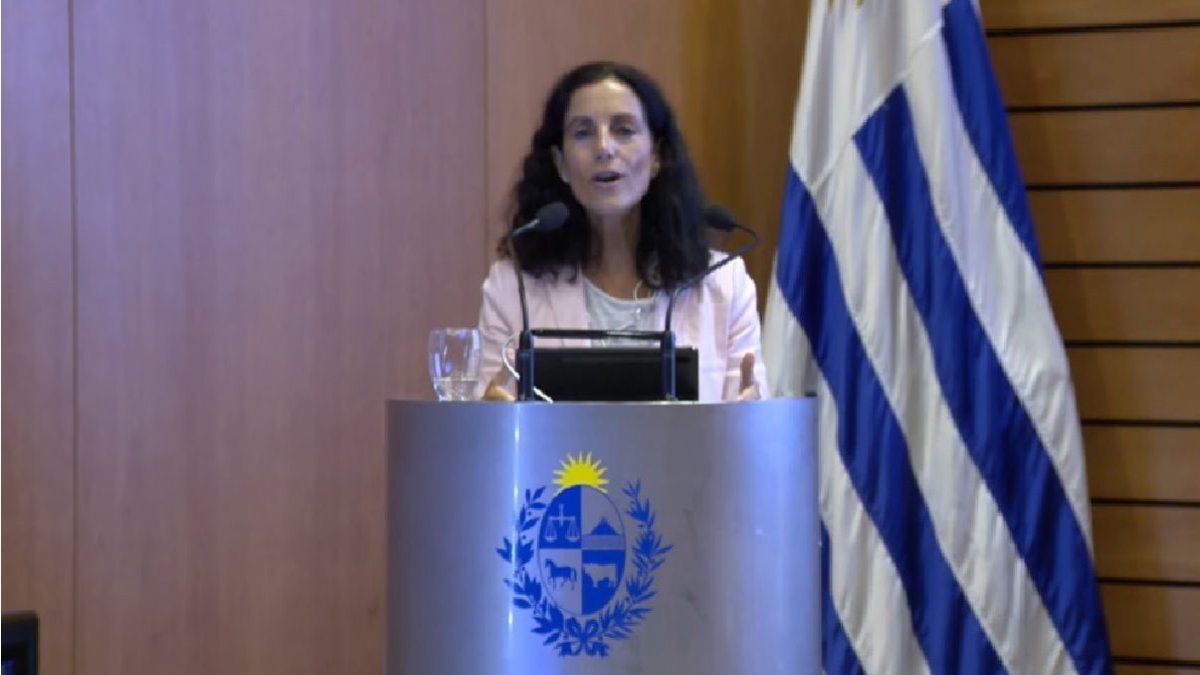With the news of the increase in purchasing power and real salary, the improvement in employment, the inflationary control sustained with eight consecutive months within the target range and, more recently, the closure of the fiscal deficit of the Central Government – BPS 2023 around 3.2%, effectively meeting the committed figures in 2022 and, even more importantly, moving towards compliance with the fiscal rule also in 2023 —despite strong moments of doubt about this objective during the year, when the deficit was around 4% of the Gross Domestic Product (GDP)—; The MEF confirms the good direction of the Uruguayan economy in a context of internal and external difficulties.
“There was a full compliance with the Fiscal Rule and within compliance with the fiscal rule, taxes were lowered and spending was increased,” Arbeleche stated in the presentation, where he confirmed that the fiscal deficit had a current result of 3.3% of GDP at the end of 2023, “fully aligned with the estimate.”
Regarding each of the three pillars, “the framework with which the true behavior of the government must be met”, the head of the MEF detailed the results: in the case of the first pillar, the structural fiscal result, reported that this was -2.7% of GDP—in line with the official estimate of the economic team. As for the spending cap, located at 2.1%, there was a real effective variation of -0.4%, marked mainly by the decrease in the Covid Expenditures category which, at the end of 2022, remained important —mostly due to the purchase of vaccines. “Without these expenses, the increase is 1.5%. There was no contraction in expenses without considering the Covid effect,” clarified Arbeleche, noting that there was no cut in other areas in order to comply with the spending target.
Finally, the pillar of debt ceiling —2,200 million dollars initially approved, which were later legally expanded to 2,864 million dollars within the framework of the water emergency— was also fulfilled: the government closed 2023 with a net debt of 2,424 million dollars which, in turn, , represented 53.5% of GDP. In this regard, the estimate had been placed at 52.2%, but the Minister of Economy explained that the difference was due to the fact that the debt is measured in terms of the product, which was lower than expected due to lower inflation and lower effective growth.
“The three pillars of the fiscal rule were fulfilled for the fourth consecutive year, and together with the positive economic scenario, we have the credit rating highest in the history of Uruguay. Above the minimum investment grade level. And if we leave aside what is the methodology and go to what is the price that the market sets, who buys the bond? Uruguay, he spread is at a historic low, below 100 basis points,” said Arbeleche.
Uruguay fiscal result 2023.png
The Uruguayan government complied with the Fiscal Rule for the fourth consecutive year.
A 2023 of consolidation
Firstly, Arbeleche took stock of the figures that characterized 2023, where he highlighted the economic growth recorded not only during the year but in relation to 2019, the pre-pandemic time.
Among the notable numbers was the increase in the level of economic activity, which closed at 3.6% more than in 2019 and was consistent last year with the projection made by the MEF of an increase of 0.5% in GDP—an estimate that will be confirmed by the Central Bank of Uruguay (BCU) in the coming days. Likewise, exports of goods and services grew by 4.5% compared to the pre-pandemic, and the total inversion —public and private— resulted in a 20% increase, even with the completion of large works such as that of UPM II.
The improvement in employment levels It was a point especially highlighted by the minister as “the result of the design of a public policy” in which the recovery of jobs lost both in the Frente Amplio administration and during the pandemic was prioritized.
“The evaluation of economic policy has to be done with job creation,” he said before announcing that, during 2023, there will be 37,000 more people working. This figure was compared to the 52,600 jobs lost during the Frente-Amplista government and the negative impact on the labor sector during the crisis generated by Covid-19. “From 2019 to 2023 we have 76,100 more employees,” confirmed the leader.
Along the same lines, he also highlighted the improvement of real salary as the second stage of this process, and targeted growth of 4% last year, 2% compared to pre-pandemic levels. The consolidation of this objective fundamentally included the reduction of inflation and the reduction of taxes—particularly, the impact of the reduction in the Personal Income Tax (IRPF), which meant an increase of 0.5%. in real wages—which contributed to increasing household income.
“After facing the pandemic in these four years, an international scenario with war, low growth and high inflation, a really adverse scenario In a region with great instability and with the worst drought in the last 100 years, what we see is that the job creation process has been consolidated, we have significantly reduced inflation, increased the real salary of workers and increased the income of the homes. And all this leads us to a better quality of life for Uruguayans, to Uruguayans having more opportunities and, ultimately, having greater freedom”, Arbeleche concluded in the 2023 balance.
“A break in the way of doing economic policy”
Arbeleche also referred to the increase in spending that took place during the year, emphasizing two specific expenses that the government assumed in 2023: the resources allocated within the framework of the water emergency —52 million dollars— and those destined for border businesses in the face of the crisis situation due to the exchange difference with Argentina.
“What happened in the past was that each expense was financed with more taxes”, said the head of the MEF and assured that “this policy management is different, it breaks with that logic of more expenses, more taxes. Expenditures increased, within the fiscal rule, but taxes were lowered.” Along these lines, she insisted that “lowering taxes means more freedom for people, which is a concept that the president repeats over and over again.”
“Resources were allocated that are directed towards society. Having a fiscal rule does not mean not increasing spending, it means doing it within parameters that make us be organized. It is the people’s money and we have to take care of it,” he considered.
Outlook 2024
Finally, the Minister of Economy and Finance outlined the projections that the portfolio carries out for this year: GDP growth of around 3.5%; a labor market that will continue to be dynamic and expects to have 14,000 more people employed; and an inflation of 4.9% at the end of the year.
As for the fiscal projections, the expected fiscal deficit is 3% —the adjustment responds to the lower inflation expected in the year; while on the pillars of the Fiscal Rule, these were set at a structural result of -2.9%, a spending limit with an effective variation of 2.8% and a debt limit that remained at 2.3 billion dollars .
Source: Ambito




